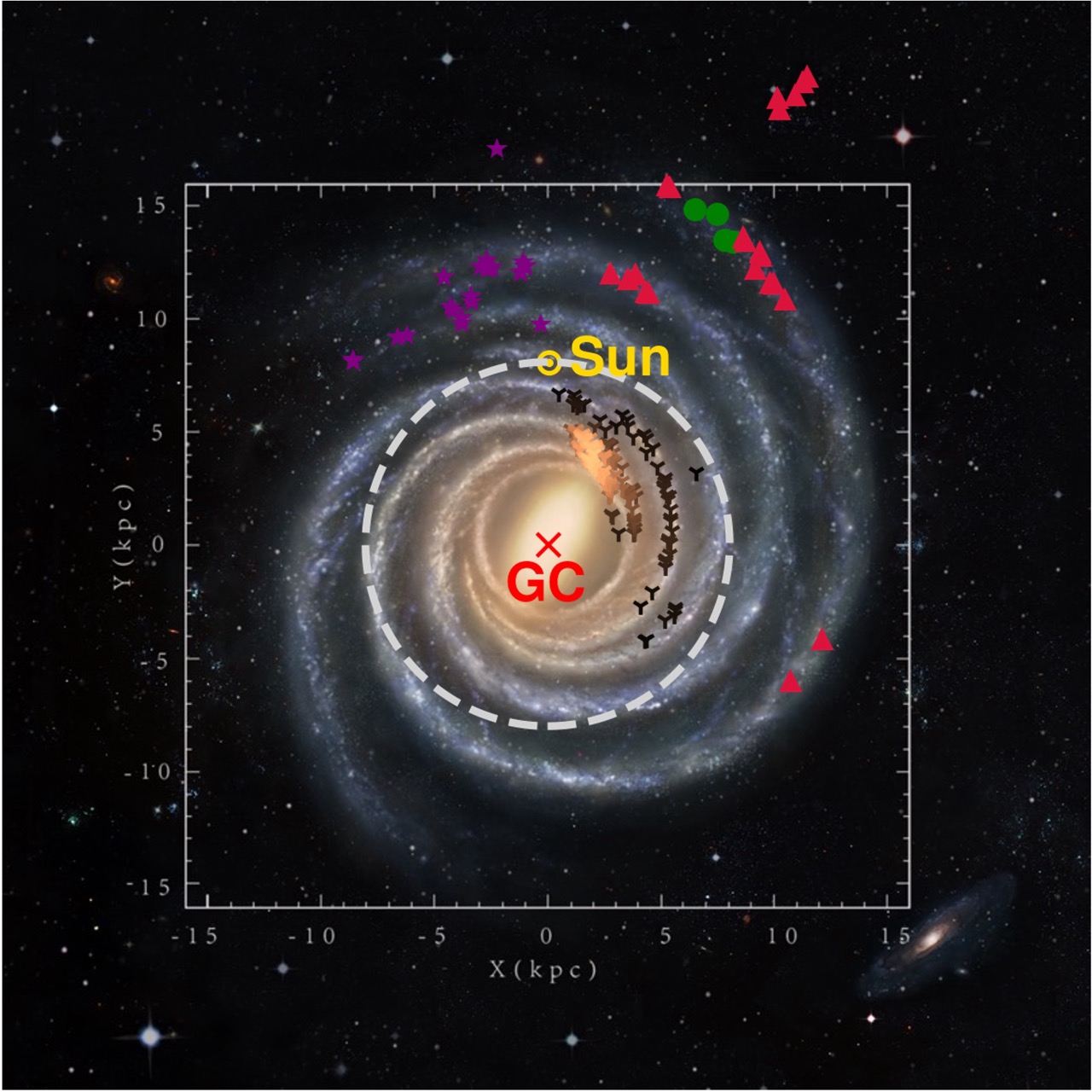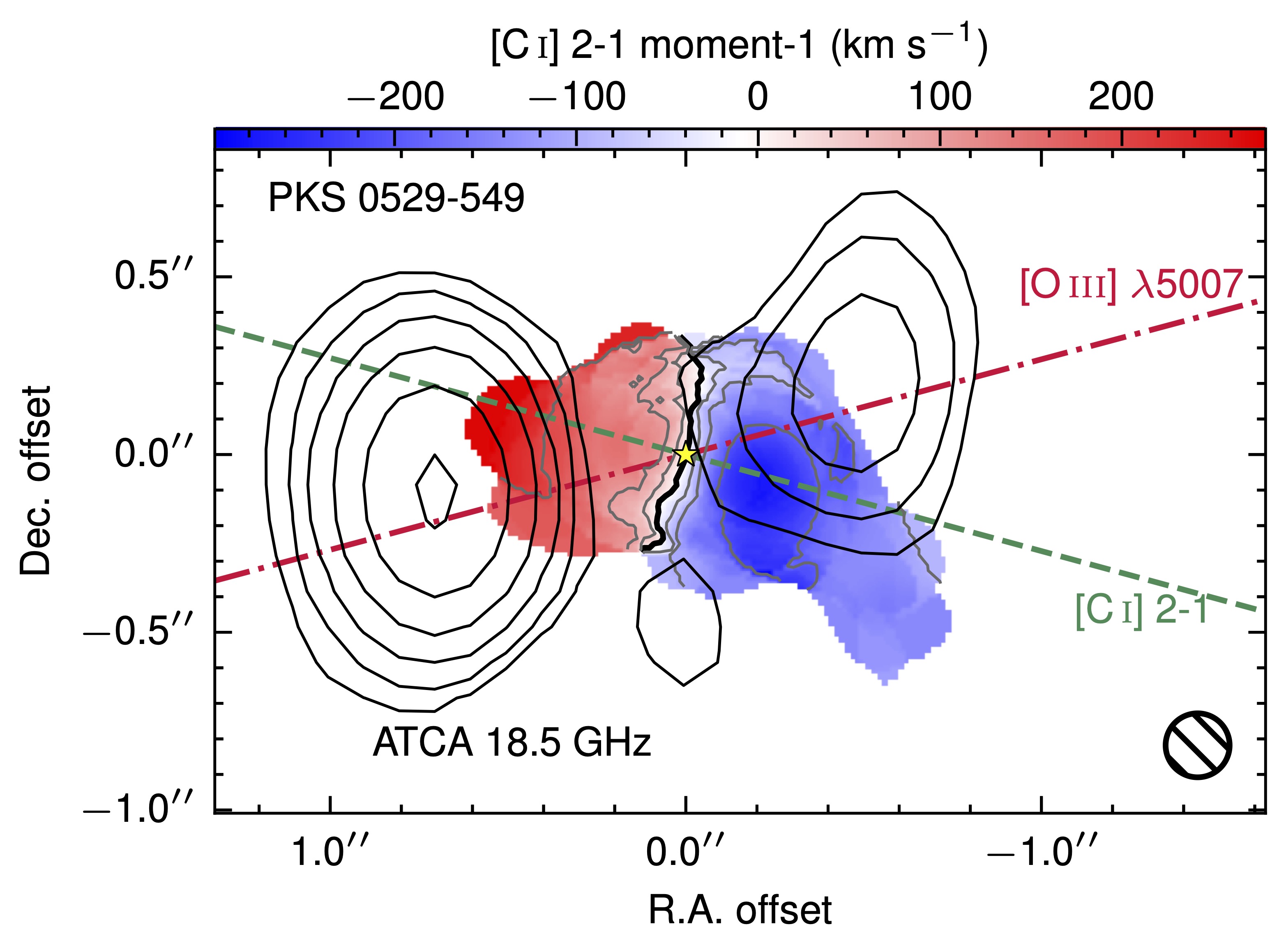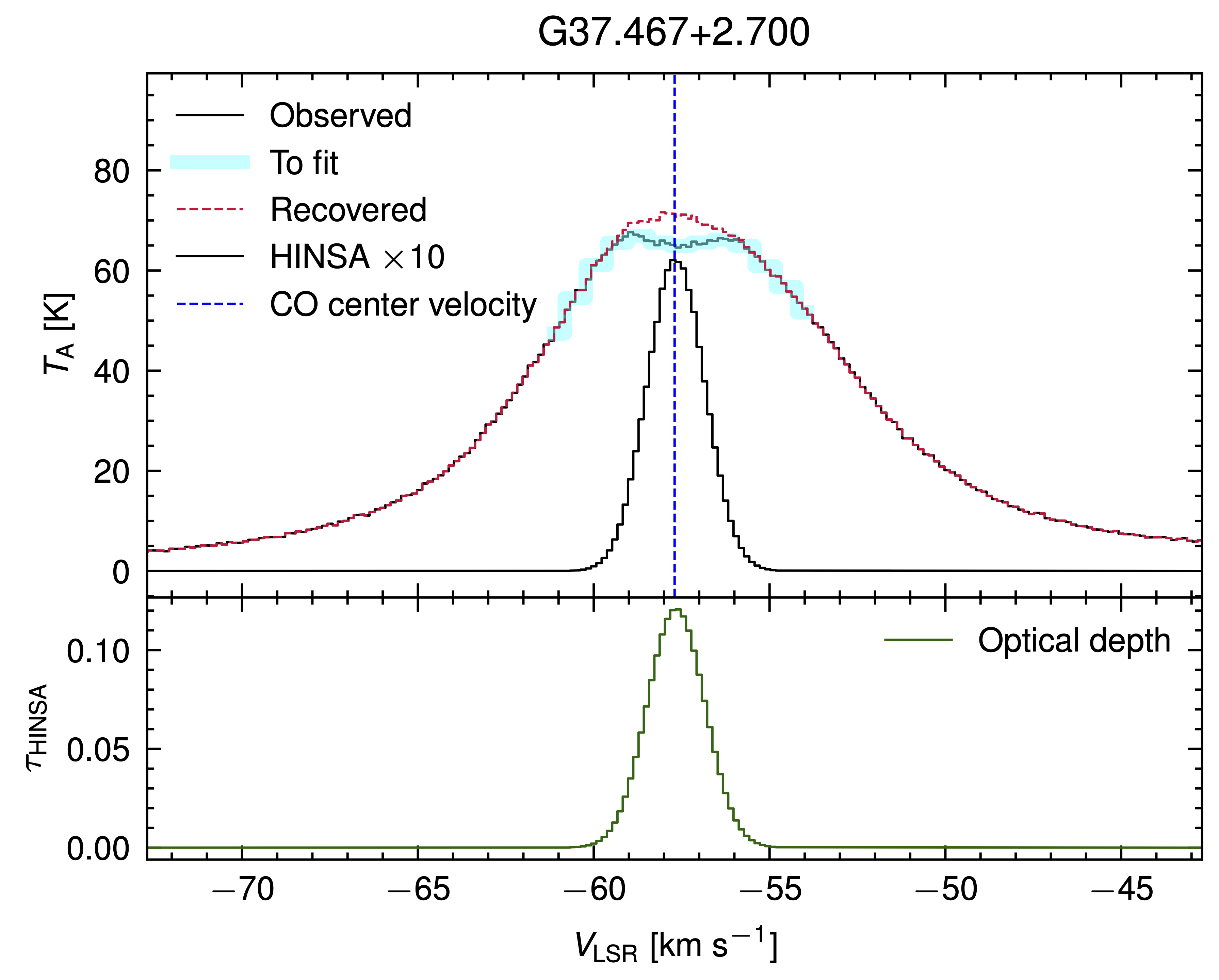Research
Main Works
Inadequate turbulent support in low-metallicity molecular clouds
Dynamic properties of molecular clouds are determined by the interplay of self-gravity, turbulence, external pressure, and magnetic field. Among them, the turbulent kinetic energy (Ek) and the self-gravitational energy (Eg) are routinely assumed to be virialized, yet benchmarks under metal-poor conditions are limited. We present mapping observations of optically-thin 13CO lines targeting metal-poor molecular clouds from the Galactic outer disk and nearby dwarf galaxies. The ratio of 2Ek/Eg systematically declines towards lower metallicity, reaching sub-virial values at which turbulence alone cannot counterbalance the cloud self-gravity. The magnetic field, as another mechanism to support molecular clouds, likely becomes dominant under low-metallicity conditions.
Published in Nature Astronomy.
Click to see!
Gas dynamics in an AGN-host galaxy at z ≃ 2.6: Regular rotation, noncircular motions, and mass models
We study the gas dynamics of PKS 0529-549: a galaxy at z ≃ 2.6 hosting a radio-loud active galactic nuclei (AGN). We use new ALMA observations of the [CI] 2-1 line at a spatial resolution of 0.18'' (∼1.5 kpc). The high-resolution [CI] data confirms that the molecular gas forms a dynamically cold, rotation supported disk with Vrot/sigma_v ≃ 6, as suggested by previous low-resolution [CI] data. In addition, we find that (1) the rotation curve is approximately flat and imply a dynamical mass of ∼10^11 M⊙ within ∼3.5 kpc; (2) mass models display a strong disk-halo degeneracy, that is models with or without dark matter halo can fit equally well the observed rotation curve, leaving the dark matter content unconstrained; (3) dynamical upper limits on the stellar and gas masses are violated by stellar masses from spectral energy distribution fits and gas masses from common gas-to-H2 conversion factors, highlighting the large uncertainties on the baryonic content; (4) there is a kinematically anomalous component at 2 kpc from the galaxy center and a gas tail extending for ∼3 kpc; the two components are probably linked and may be due to a minor merger or a gas accretion event
Published in A&A. This work is mainly done at ESO Garching.
Click to see!
Other Extensions
- Developing a Python-based pipeline to facilitate the FAST data reduction. For more information, visit the project page.
- HI narrow self-absorption (HINSA) in Galactic outer disk molecular clouds

- HI kinematics of the Galactic Anticenter High Velocity Cloud (AC-HVC)
- HI kinematics of the Supernova Remnant IC 443 (SNR IC 443)
- ...